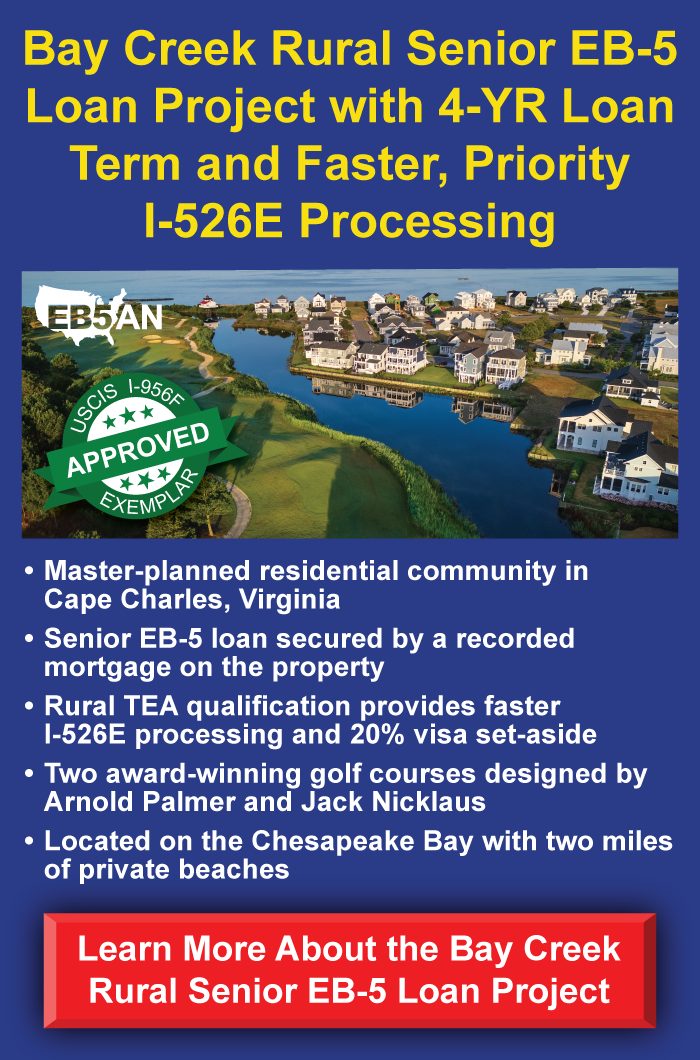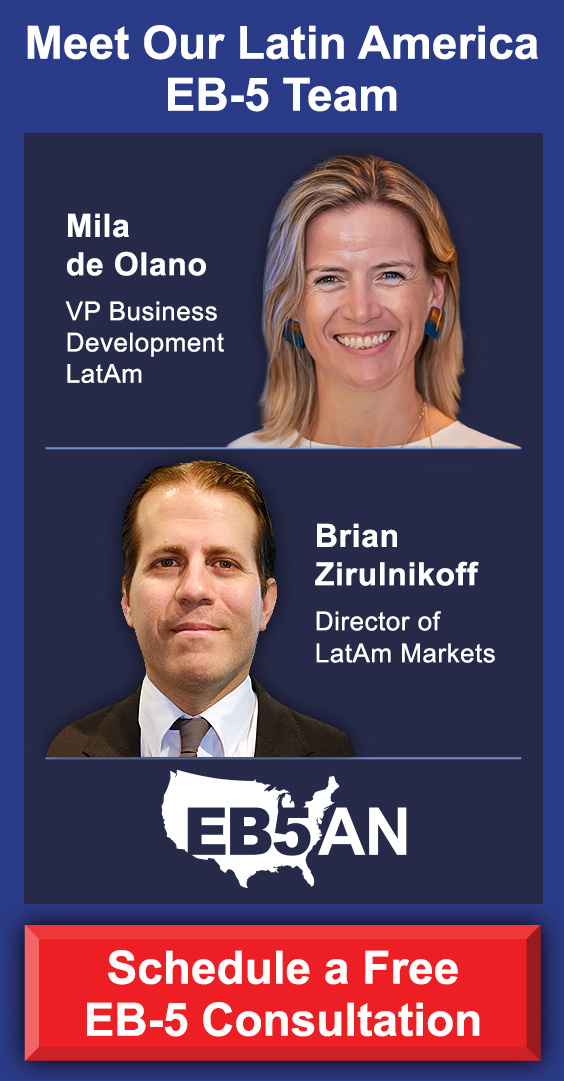When evaluating an EB-5 investment opportunity, one of the key concerns for investors is the safety and security of their funds. As an investor seeking a Green Card through the EB-5 Immigrant Investor Program, you want to ensure that your capital is protected, especially from the risks involved in any real estate or business venture.
While all investments come with risk, there are several important ways to minimize the risk you’ll face. One way to mitigate risk in an EB-5 project is to ensure that the financing structure includes third-party lenders, such as banks or institutional lenders, alongside EB-5 capital.
This article will explore why third-party lenders make EB-5 projects safer and why such a structure should be considered the ideal investment approach for EB-5 investors.
Understanding the EB-5 Program
What Role Does a Third-Party Lender Play?
How Third-Party Lenders Make EB-5 Projects Safer
- Rigorous Due Diligence Process
- Senior Loan Priority and Capital Structure
- Experienced Project Oversight
- Diversified Risk
- Alignment of Interests
The Ideal Structure: Third-Party Senior Loan Plus EB-5 Funding
EB5AN Can Help You Find a Reliable Project
Understanding the EB-5 Program
The EB-5 program allows foreign nationals to obtain U.S. permanent residency (a Green Card) by investing in a U.S. new commercial enterprise that creates at least 10 full-time jobs for U.S. workers. The minimum investment required is $1,050,000—or $800,000 if investing in a targeted employment area. In exchange for this investment, investors and their dependent family members receive Green Cards.
One of the key components of the EB-5 process is that the investor’s capital must be used for job-creating projects. Many EB-5 projects, particularly those in real estate development or business ventures, are structured through EB-5 regional centers. These regional centers pool together investments from multiple EB-5 investors to fund projects in industries like construction, real estate, or hospitality.
While this model can offer the potential for both a Green Card and a financial return, it also carries inherent risks—especially when the project’s financing structure depends too heavily on EB-5 loans.
What Role Does a Third-Party Lender Play?
A third-party lender, typically a traditional bank or other institutional lender, plays an important role in a project’s financing. These lenders provide loans to projects that are independent from the EB-5 investment funds. A senior loan from a third-party lender is often prioritized in terms of repayment, meaning that the lender gets repaid first before EB-5 investors if the project generates revenue or experiences profits.
Notably, third-party lenders are generally very conservative and thorough in their approach to underwriting and approving loans. This level of due diligence and the institutional expertise of these lenders create additional layers of security for the investors—including by signaling that these lenders believe the project is worth investing in.
How Third-Party Lenders Make EB-5 Projects Safer
Rigorous Due Diligence Process
Traditional financial institutions such as banks or other institutional lenders are highly regulated and required to perform extensive due diligence before approving a loan. This includes assessing the financial health of the project, the experience of the developers, the projected revenue, and the feasibility of the project.
Lenders also evaluate the risk profile of the project in detail, ensuring that it is viable and likely to succeed.
The stringent nature of this due diligence process means that projects receiving loans from third-party lenders must meet a higher standard of scrutiny than those relying solely on EB-5 funding.
On the other hand, while EB-5 funds are still required to assess the viability of the projects they fund, they may not be as conservative as traditional lenders. EB-5 projects often rely heavily on the flow of future EB-5 investor funds to get started, which can introduce uncertainty if investor capital does not materialize as expected.
Meanwhile, a third-party lender’s involvement ensures that a significant portion of the funding has been secured with the appropriate due diligence.
Senior Loan Priority and Capital Structure
In an ideal EB-5 project structure, the funding is already in place through a combination of equity capital and a third-party senior loan.
The senior loan is typically the first source of repayment if the project generates revenue or proceeds from the sale of assets. This means that the third-party lender’s investment is considered more secure than the EB-5 investment, which is often in a subordinated position in the capital stack.
For EB-5 investors, this hierarchy adds a layer of security. Because third-party lenders are repaid before EB-5 investors, the project must be strong enough to fulfill the lender’s obligations before EB-5 funds are even considered for repayment. This gives investors more confidence, as they now know that the project’s financial structure is backed by a respected institutional player with a vested interest in the project’s success.
If a project relies mostly on senior loan financing and developer equity, it is likely a low-risk option for EB-5 investors.
Experienced Project Oversight
Third-party lenders are generally more experienced in managing large-scale projects and investments. They have systems in place to monitor the financial progress of a project, including regular audits and reporting requirements. These lenders are also often more proactive in identifying potential risks or concerns and can intervene early if there are signs that the project may face financial or operational challenges.
For EB-5 investors—many of whom have little to no experience with the kinds of projects they’ll be investing in—this professional oversight reduces the risk of mismanagement or fraud, as institutional lenders are highly motivated to protect their capital and ensure that the project meets its milestones. This level of scrutiny adds another layer of protection for EB-5 investors, ensuring that the project adheres to professional standards and reduces the likelihood of costly mistakes.
Diversified Risk
When an EB-5 project relies solely on EB-5 investor funds, the risk is concentrated on the success of that specific group of investors and the timing of their capital commitments. If EB-5 investments do not come through as planned or if the timeline for investment is delayed, the project may face funding gaps that threaten its viability.
Third-party lenders bring diversified capital sources into the project. As a result, the project’s financial needs are met without over-relying on EB-5 capital. This diversification spreads the risk across different investor groups, including traditional financial institutions that are more likely to have greater financial stability. This reduces the overall risk of the project from the perspective of EB-5 investors, as the project is not solely dependent on the performance of EB-5 fundraising.
Alignment of Interests
While EB-5 investors and third-party lenders have different priorities (Green Card approval versus financial return), both groups share an interest in the project’s success. Third-party lenders are motivated to see the project succeed, as they want to ensure their loan is repaid, and EB-5 investors want the project to succeed so that they can receive their Green Cards and have their funds returned to them. This common goal creates an alignment of interests between the lender and EB-5 investors.
In projects where a third-party lender is involved, the developer may be more motivated to meet project deadlines and financial milestones, knowing that both the lender and EB-5 investors are relying on the success of the project. This increased accountability can benefit EB-5 investors by ensuring that the project operates efficiently and effectively toward job creation and revenue generation.
The Ideal Structure: Third-Party Senior Loan Plus EB-5 Funding
The most ideal and safest structure for an EB-5 project is one where all necessary funds, including a senior loan from a third-party lender, are already in place before EB-5 funds are brought in. In this setup, EB-5 funds are used to reduce a portion of pre-committed debt or equity capital.
In such a structure, the senior loan has already secured a significant, or full, portion of the funding, and the third-party lender’s due diligence ensures that the project is likely to succeed. EB-5 investors can then provide additional capital to reduce the debt or equity burden, making the project more financially stable while also increasing the chances of getting their Green Cards approved.
This creates a win-win situation for both the developers—who benefit from a flexible, lower-cost funding alternative—and investors—who benefit from an increased likelihood of financial and immigration success.
EB5AN Can Help You Find a Reliable Project
For foreign investors looking to obtain a Green Card through the EB-5 program, the involvement of a third-party lender in a project’s financing structure can significantly enhance the safety and security of their investment. By ensuring that the project’s capital stack includes senior loans from respected financial institutions, EB-5 investors can feel more confident that their investment is protected and that the project is on a solid financial footing.
Incorporating third-party lenders into an EB-5 project also helps to ensure that the developer’s interests align with those of the investors, further enhancing the likelihood of both a successful project and the fulfillment of the EB-5 program’s requirements. For these reasons, EB-5 investors should strongly consider projects that incorporate third-party institutional lenders as part of their financing strategy.
At EB5AN, we prioritize project safety by ensuring our EB-5 regional center projects follow the same principles outlined in this article. Our projects are structured with a strong financial foundation, incorporating third-party senior loans alongside EB-5 capital to reduce financial risk and enhance long-term viability. With a 100% USCIS project approval rate, more than a decade of experience, and over 2,300 families from 70+ countries successfully supported, we provide investors with reliable, well-structured EB-5 opportunities.
If you would like to know more about how to identify the best projects to invest in, book a free call with our expert team today.










